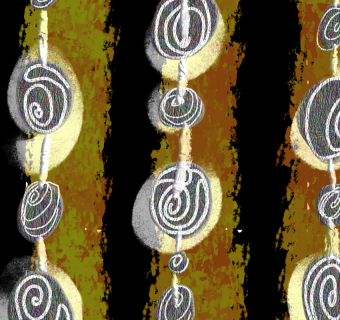We live in an age of social media. Facebook, Twitter, Pinterest, LinkedIn…if you can connect to it, we’re on it. How do we make sense of the undeniable lure of these virtual communication avenues—is it our modern day society? Is it something internally motivated, maybe a fear of being alone? Perhaps it is a combination of both? And furthermore, what does this inescapable intermingling of communication, social media, and the virtual world mean for society’s vision of gender? On November 14th, 2012, Jane Friedman (Virginia Quarterly Review), and Suzie McCarthy (U.Va Department of Politics) will lead an open discussion that attempts to answer these questions, expanding into a dialogue about the nature of gendered usage of social media. They will explore the ways in which men and women use social media and to what means—men use it more, but women use it more intensely to create social bonds. What does this difference in the way men and women use social media suggest about the ways in which social media may be affecting society’s view of gender? The discussion will delve deep into the notions of gender and identity that exist in our relationships with social media and will consider how this perpetuates or disrupts gender norms. In the weeks leading up to the event, here at Iris, we have been educating ourselves on the statistical and qualitative research that supports the claim that men and women use the Internet and social media differently. Here’s a quick look at what we learned:
- Women are more animated in their communications on social media sites; they use social media to deepen their personal connections, and are more likely to share information with friends and family on a variety of topics like recent events or funny moments.
- Men are generally ahead of the curve when it comes to incorporating new technologies into their daily lives, stemming from a greater interest in technology and new social media tools. However, women are catching up.
- Both men and women value the Internet and social media for its efficiency and huge database of information on virtually any topic—from finances to religion, health to sports, it’s all at your fingertips.
- In a demographic study of Facebook, it was discerned that nearly 90% of young adults and the college-educated population are now online. [“Facebook releases first-ever demographic look at users”, Mike Swift, 2009]
- People often maintain multiple profiles on different social media sites. There appears to be a trend in the type of site that is used by the majority of the online population—Facebook has certainly taken over Myspace’s membership in the past 5 years.
- Men generally check their profiles more often than women, but there is an overall trend to check social media updates at least once daily, regardless of sex.
- The gender gap in Internet usage has narrowed dramatically in the past 5 years; each sex is almost as equally connected as the other.
These facts and statistics provide an interesting segue into the first of the Brown Bag Lunch series at the U.Va Women’s Center—appropriately titled “Gender, Identity, and Social Media.” The discussion facilitated should be not only informative and stimulating, but also interesting in light of the firing and reinstatement of Teresa Sullivan. Social media has certainly revolutionized the way in which we see the world and interact with our surroundings—do not miss this opportunity to examine social networking in an academic setting with two impressive and renowned women in the field! Facebook information for the event can be found here. See you there! - Addie Information for this article was provided by the Pew Internet & American Life Project






